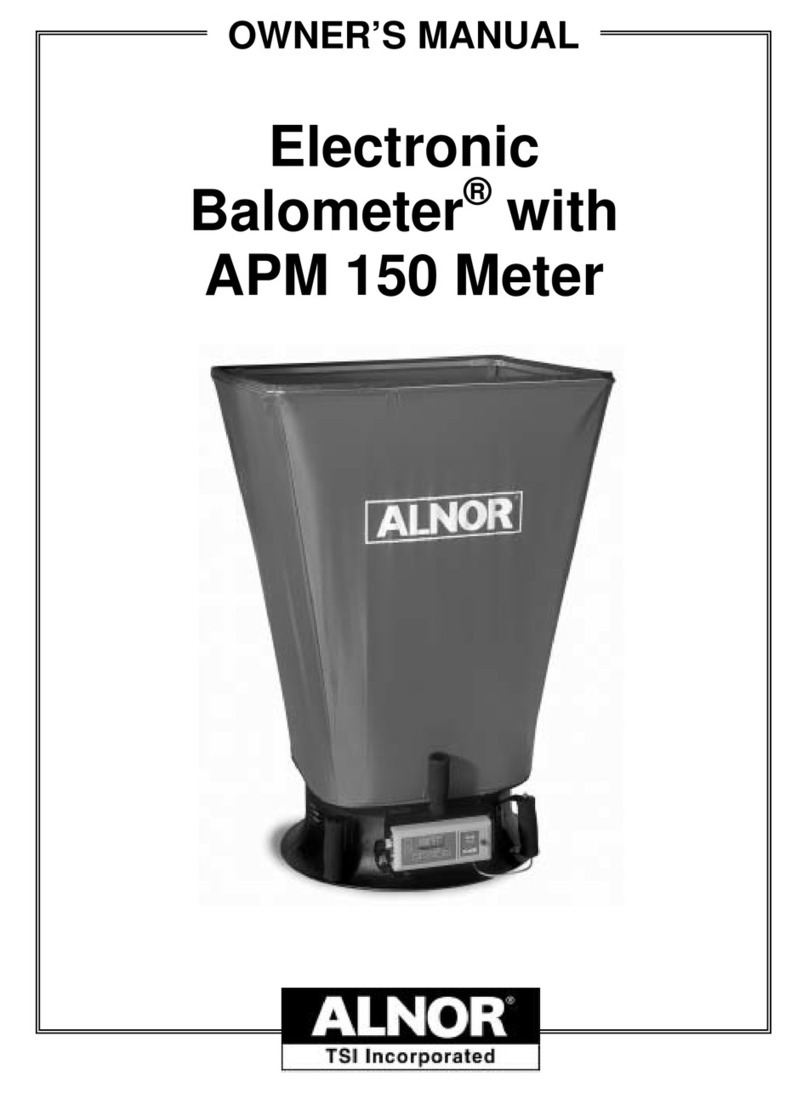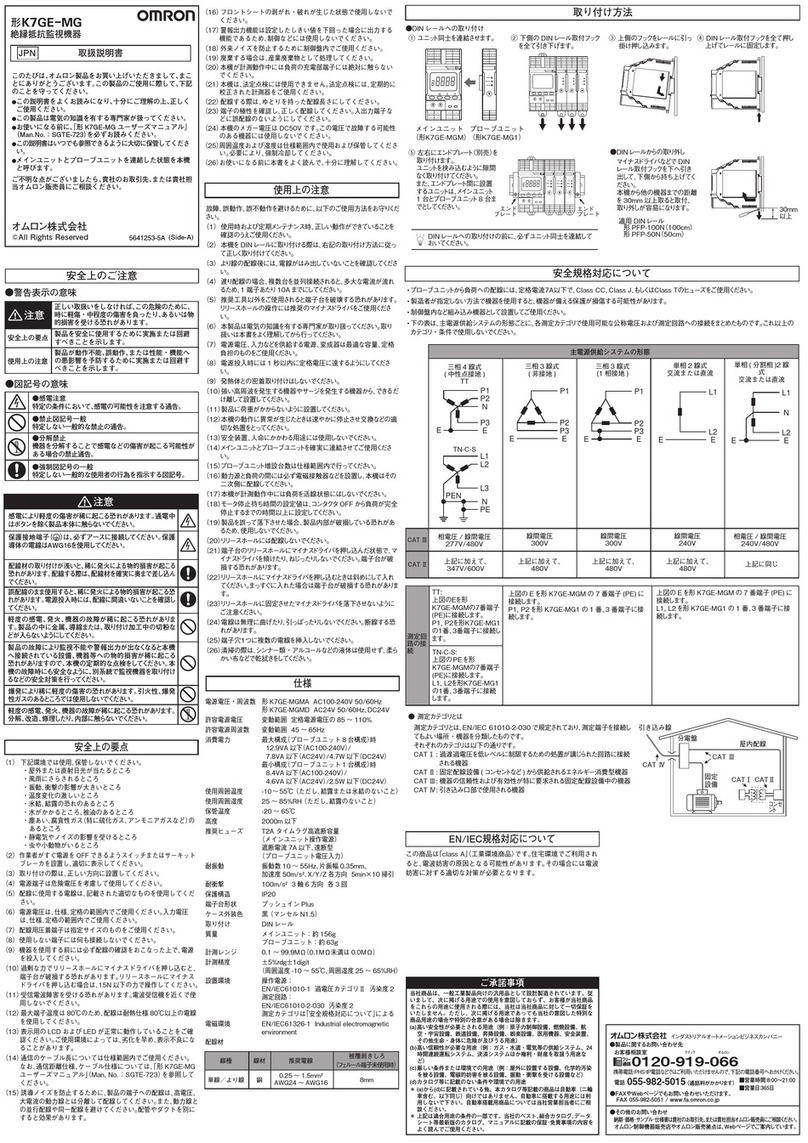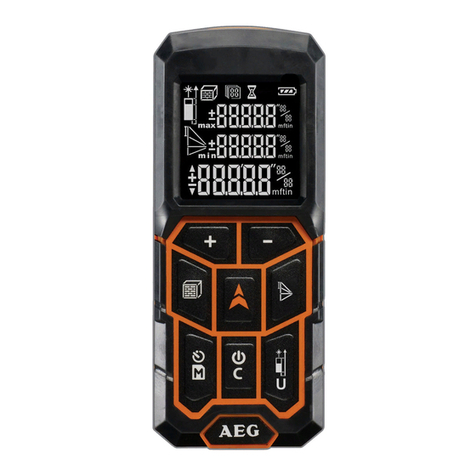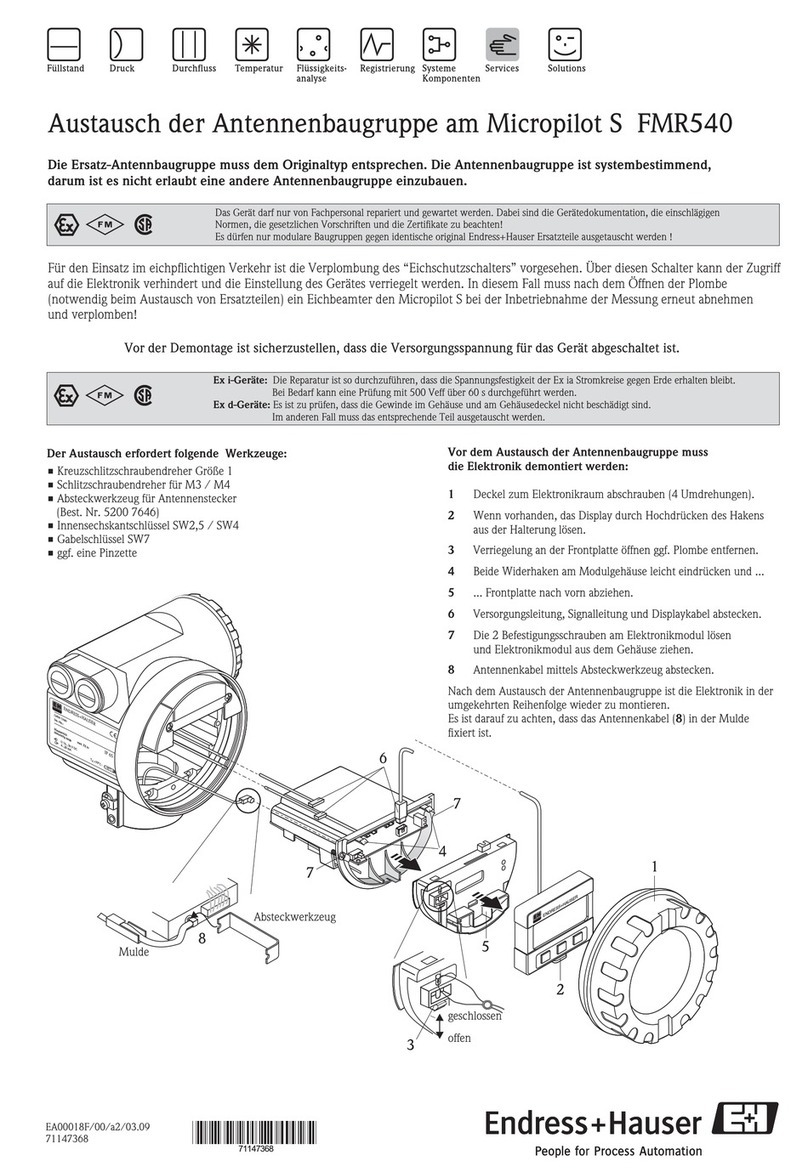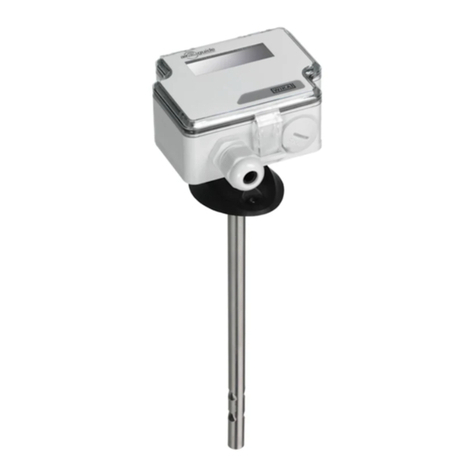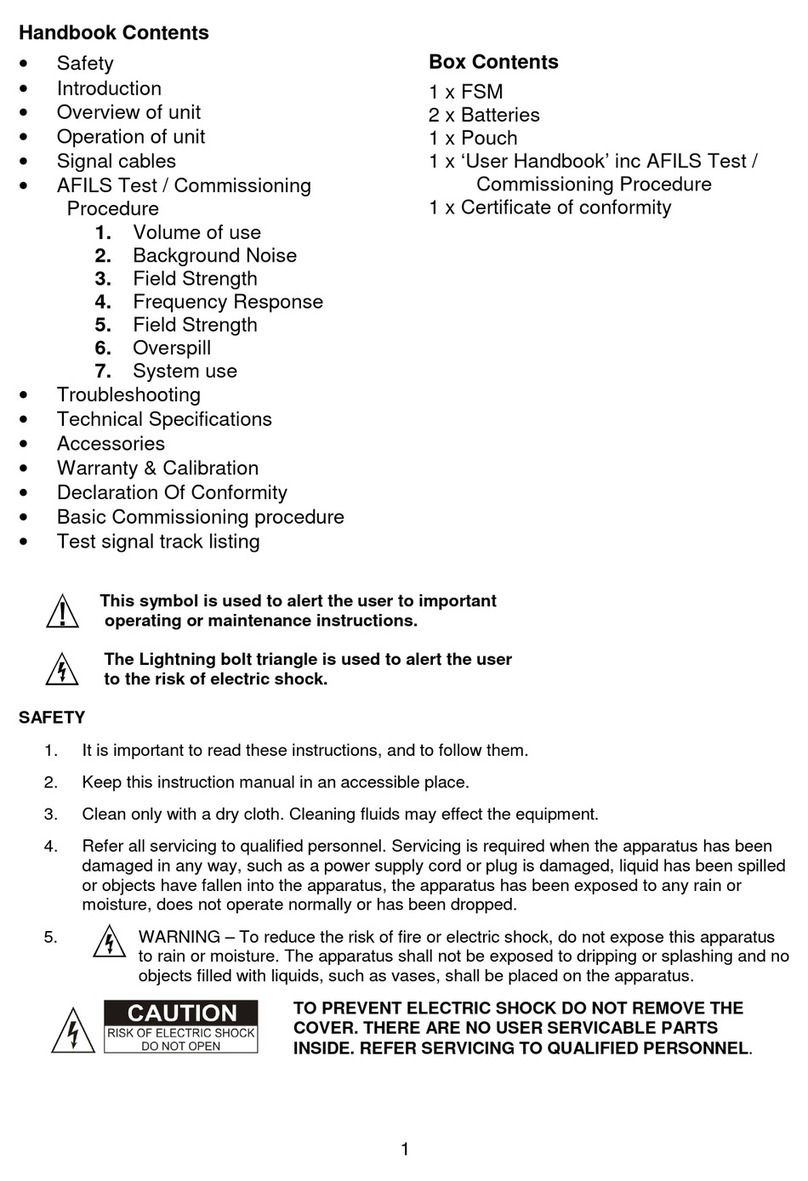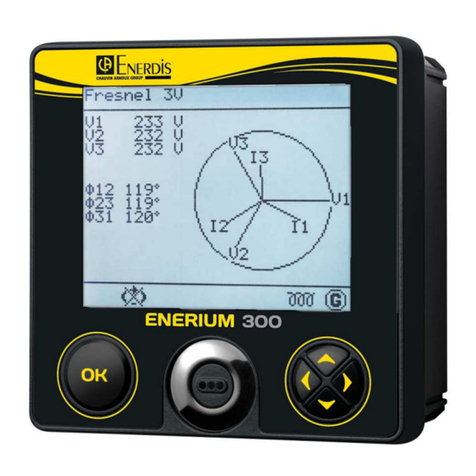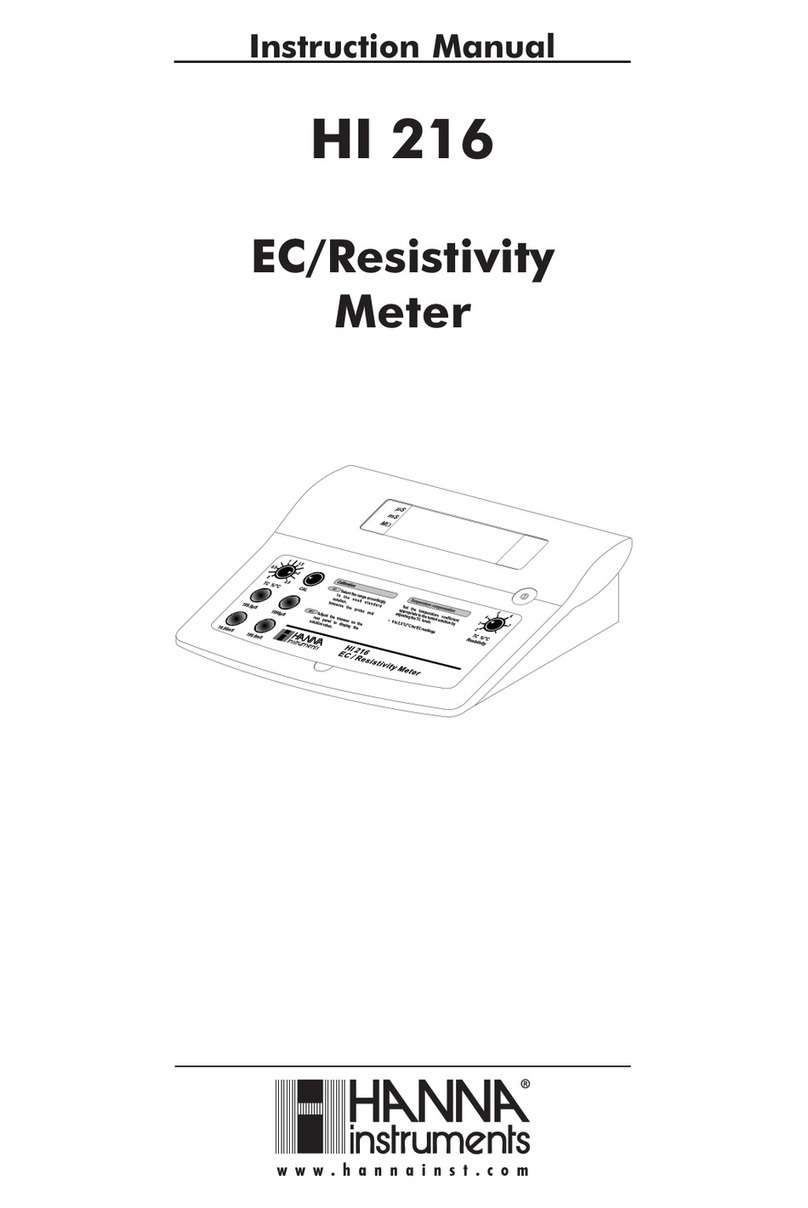ELOKON ELOSHIELD User manual

Instruction Manual
ELOshield: driver-assistance system for vehicle safety that automatically
helps avoid collisions to reduce risk of vehicle-pedestrian accidents
Revision 20
For software version 1.2.0.9
09.03.2020
INSTRUCTION MANUAL
Winning solution

Instruction manual I ELOshield
Rev. 20 09.03.2020 Page 2 of 85
CONTENT
1. IMPORTANT INFORMATION .................................................................................................................. 4
1.1 Risk assessment ............................................................................................................................................ 6
1.2 Electromagnetic wave radiation ................................................................................................................... 7
1.3 Operation of ELOshield ................................................................................................................................. 7
2. MAIN FUNCTIONALITY OF THE MODULES .............................................................................................. 8
2.1 Vehicle/stationary antenna modules (A) ...................................................................................................... 8
2.2 Pedestrian module ....................................................................................................................................... 8
2.3 Vehicle/stationary antenna module (B) ....................................................................................................... 8
2.4 Vehicle module ............................................................................................................................................. 8
3. INTERACTION BETWEEN MODULES ....................................................................................................... 9
4. SCOPE OF DELIVERY ............................................................................................................................. 13
4.1 Vehicle set .................................................................................................................................................. 13
4.2 Stationary set and verification unit. ........................................................................................................... 13
4.3 Pedestrian set ............................................................................................................................................. 14
4.4 Accessories ................................................................................................................................................. 15
5. USE AND OPERATION OF THE PEDESTRIAN MODULE AND CHARGER ................................................... 16
5.1 Operating modes ........................................................................................................................................ 17
5.2 Q button ..................................................................................................................................................... 18
5.3 Warning and informing the operator ......................................................................................................... 18
5.4 Charging the battery ................................................................................................................................... 19
5.4.1 Use the standard charger supplied with the pedestrian module as follows: ............................................. 19
5.5 Correct use of the pedestrian module........................................................................................................ 20
6. USE AND OPERATION OF THE VEHICLE MODULE ................................................................................. 23
6.1 Operating modes ........................................................................................................................................ 23
6.2 Warning and informing the operator ......................................................................................................... 24
6.3 Inputs/outputs ............................................................................................................................................ 25
6.4 Zones .......................................................................................................................................................... 25
6.5 Mechanical installation ............................................................................................................................... 25
6.5.1 Vehicle modules ......................................................................................................................................... 26
6.5.2 Antenna modules (A) .................................................................................................................................. 26
6.5.3 Antenna module (B) ................................................................................................................................... 31
6.5.4 Vehicle module ........................................................................................................................................... 32
6.6 Electrical installation .................................................................................................................................. 32
6.6.1 Assigning connection cables ....................................................................................................................... 33
6.6.2 Example connections in X1 group .............................................................................................................. 35
7. USE AND OPERATION OF THE STATIONARY MODULE .......................................................................... 37
7.1 Warning and informing ............................................................................................................................... 37
7.2 Inputs/outputs ............................................................................................................................................ 38
7.3 Zones .......................................................................................................................................................... 38
7.4 Mechanical installation ............................................................................................................................... 38

Instruction manual I ELOshield
Rev. 20 09.03.2020 Page 3 of 85
7.4.1 Stationary antenna modules (A) ................................................................................................................. 39
7.4.2 Stationary antenna module (B) .................................................................................................................. 43
7.4.3 Example of installed antenna modules (A/B) ............................................................................................. 45
7.5 Electrical installation .................................................................................................................................. 45
7.5.1 Connecting the power supply ..................................................................................................................... 46
7.5.2 Switching the stationary module on/off ..................................................................................................... 47
7.5.3 Connecting inputs and outputs .................................................................................................................. 47
7.5.4 CAN bus and terminator ............................................................................................................................. 49
7.6 Verification module .................................................................................................................................... 51
8. SYSTEM CONFIGURATION .................................................................................................................... 52
8.1 Minimum requirements: ............................................................................................................................ 52
8.2 Necessary cables......................................................................................................................................... 52
8.3 Starting the application .............................................................................................................................. 52
8.4 Establishing the connection ........................................................................................................................ 53
8.5 Saving current configuration of warehouses .............................................................................................. 53
8.6 Transferring settings from/to the device ................................................................................................... 53
8.7 Saving the current configuration of single devices ..................................................................................... 53
8.8 Setting up the stationary module / vehicle module ................................................................................... 54
8.9 Configuration of the pedestrian module .................................................................................................... 59
8.9.1 Pedestrian module detection ranges ......................................................................................................... 61
8.10 Circular, symmetric and custom shaped zones .......................................................................................... 62
8.11 Automatic calibration ................................................................................................................................. 64
8.12 Actions ........................................................................................................................................................ 64
8.12.1 Stationary, verification- and vehicle module action arguments ................................................................. 64
8.12.2 Stationary, verification- and vehicle module action results ....................................................................... 66
8.12.3 Pedestrian module action arguments ........................................................................................................ 68
8.12.4 Pedestrian module action results ............................................................................................................... 69
8.12.5 Examples of actions .................................................................................................................................... 73
9. MAINTENANCE .................................................................................................................................... 77
10. FAILURES OF ELOSHIELD ...................................................................................................................... 78
11. TECHNICAL DATA ................................................................................................................................. 79
11.1 Accuracy – worst case (small distance between antennas) ....................................................................... 79
11.1 Vehicle set .................................................................................................................................................. 80
11.2 Pedestrian set ............................................................................................................................................. 81
11.3 Stationary set and verification unit ............................................................................................................ 81
12. EC DECLARATION OF CONFORMITY ..................................................................................................... 83
13. FCC DECLARATION OF CONFORMITY ................................................................................................... 84

Instruction manual I ELOshield
Rev. 20 09.03.2020 Page 4 of 85
1. Important information
DANGER DANGER indicates a hazardous sitiuation which, if not
avoided, will result in death or serious injury.
WARNING WARNING indicates a hazardous sitiuation which, if not
avoided, could result in death or serious injury.
CAUTION CAUTION indicates a hazardous sitiuation which, if not
avoided, may result in minor or moderate injury.
NOTICE NOTICE indicates a property damage message.
WARNING
Risk of injury due to inattention!
Use of ELOshield can result in less attention being paid to the surroundings. This
can lead to serious accidents and injuries.
Please always bear in mind that ELOshield is an assistant warning system which
can only assist the driver of the vehicle in the driving task as well as the
pedestrian within their respective system limits.
ELOshield is a radio-based warning system, whose accuracy and coverage can
be influenced by onsite conditions such as reflections.
The attention of all participants to the surroundings must always be maintained.
ELOKON cannot be held liable for damages caused due to misuse of the device. It must be
remembered that:
ELOshield is an assistant warning system. The user (operator) is responsible for safe operation
of a vehicle.
The depository/fleet manager is responsible for personnel training in the scope of operation of
ELOshield.
ELOshield is an assistant warning system and it absolutely does not release the users from an
obligation to maintain full vigilance in view of potential dangers.
During installation the manufacturer specification must be followed in the scope of installation
of electrical and mechanical devices, and their integration with a vehicle.

Instruction manual I ELOshield
Rev. 20 09.03.2020 Page 5 of 85
The installation, start-up and maintenance works must be performed by qualified personnel
only.
All cables and connections must be laid in a manner preventing damages and minimizing
susceptibility to inference.
ELOshield must be installed so as it does not obstruct the view and does not interfere with
vehicle entry and exit.
When ELOshield is installed and used, applicable standards and directives in a given country
must be observed.
The installation and all other works on the device must be performed with a vehicle switched
off (with battery disconnected).
ELOshield specification and technical data must be respected.
When the device service life elapses, ELOshield must be disposed of in a correct and
environment-friendly manner.
WARNING Changes or modifications made to this equipment not expressly
approved by (manufacturer name) may void the FCC
authorization to operate this equipment.
NOTICE
The antenna module complies with the FCC radiation exposure
limits set forth for an uncontrolled environment. Co-location of
this module with other transmitters that operate simultaneously
are required to be evaluated using the FCC multi-transmitter
procedures. The RF exposure has been calculated with a 20 cm
separation distance.
NOTICE The pedestrian module complies with the FCC radiation
exposure limits set forth for an uncontrolled environment.

Instruction manual I ELOshield
Rev. 20 09.03.2020 Page 6 of 85
NOTICE
This equipment has been tested and found to comply with the
limits for a Class B digital device, pursuant to part 15 of the FCC
Rules. These limits are designed to provide reasonable
protection against harmful interference in a residential
installation. This equipment generates, uses and can radiate
radio frequency energy and, if not installed and used in
accordance with the instructions, may cause harmful
interference to radio communications. However, there is no
guarantee that interference will not occur in a particular
installation. If this equipment does cause harmful interference
to radio or television reception, which can be determined by
turning the equipment off and on, the user is encouraged to try
to correct the interference by one or more of the following
measures:
- Reorient or relocate the receiving antenna.
- Increase the separation between the equipment and
receiver.
- Connect the equipment into an outlet on a circuit
different from that to which the receiver is connected.
- Consult the dealer or an experienced radio/TV
technician for help.
1.1 Risk assessment
The users vigilance may be limited as they become used to being warned by ELOshield. It may result
in hazardous situations for the people and machinery. In order to minimize the risk of such hazards,
the following guidelines must be observed:
The ELOshield users must be repeatedly informed about potential technical failures of
ELOshield.
The system users must be fully familiar with the system operation and aware of consequences
of activating special operating modes of the devices.
WARNING
Prior to the commencement of work, each operator
(pedestrian, truck and station) must make sure that
ELOshield operates correctly by checking its correct
functionality – a test interaction of each ELOshield
module and combination of modules must be evoked in
order to trigger an alarm.

Instruction manual I ELOshield
Rev. 20 09.03.2020 Page 7 of 85
1.2 Electromagnetic wave radiation
As specified in the international standard ISO 14117:2012, the ELOshield electronic radio warning
system operates in the frequency band of over 3 GHz and does not constitute a hazard to human
life in accordance with their intended use.
ELOshield is intended to protect pedestrians (a pedestrian module), vehicles (a vehicle module) and
zones (a stationary module). The system may also be used to create industrial automatic control
systems reacting to an approaching/receding object.
1.3 Operation of ELOshield
Each person to whom a vehicle constitutes a potential threat must be equipped with the pedestrian
module. Each vehicle which is meant to detect pedestrians/vehicles/stationary zones must be
equipped with a vehicle module with antenna modules (A) (1-4) creating two protective zones
around the vehicle. Locations that are especially hazardous or require additional interactions with
vehicles/pedestrians must be secured using a stationary module with antenna modules (B) (1–4)
and stationary modules (1–4). Examples of such locations include crossings with heavy traffic or
entrance gates.
Each person/vehicle within the protective zone (span of the zone: up to 12 m for vehicles, 12 m for
pedestrians) is detected by the system. Entering the zone triggers pre-configured actions of the
vehicle or stationary infrastructures.
Example actions of the vehicle include: acoustical alarm, optical alarm, speed reduction and even
breaking down the vehicle.
By proper configuration of the stationary module, vehicles and/or persons within the range of the
stationary zone may trigger the following actions: opening of the entrance gate, change the state of
traffic lights, vehicle speed reduction within the range of the stationary zone, stopping a vehicle
entering an area where the pedestrian is present, etc.
The actions performed by the pedestrian module in an emergency situation include: a visual signal,
acoustic alarm, vibration.
The alarm/warning may be muted by pressing the Q button.

Instruction manual I ELOshield
Rev. 20 09.03.2020 Page 8 of 85
2. Main functionality of the modules
2.1 Vehicle/stationary antenna modules (A)
Recognition of objects equipped with the pedestrian module, vehicle module and stationary
module.
Transfer of information regarding detected objects to the vehicle module in order to control
outputs and warn the driver.
Generation of two configurable protection zones with a radius of 1 to 12 m (vehicles) and 1 to
12 m (pedestrians).
2.2 Pedestrian module
Recognition of zones around vehicles and stationary devices equipped with antenna modules
(A).
Warning/alarming a pedestrian (by means of vibration/optical/acoustic alarm), when a
recognized zone is breached.
Releases a warning/alarm in a device, the zone of which has been breached by a pedestrian.
Triggers outputs in the vehicle module in order to activate e.g. the creeping mode in a vehicle
or to control an industrial automatic control system using the stationary module.
2.3 Vehicle/stationary antenna module (B)
Allows to detect a vehicle/zone by antennas
Triggers an alarm/warning in devices, which have detected it.
Triggers outputs in devices, which have detected it.
Triggers an optical/acoustic alarm, when the zone is breached.
Transfer of information regarding detected objects to the vehicle module in order to control
outputs and warn the driver.
2.4 Vehicle module
Warns/alarms a driver, when the zone around a vehicle is breached.
Displays a number of objects breaching the alarm zone.
Controls automated infrastructure objects, e.g. a gate
2 NO/NC relay outputs
2 digital open collector outputs
2 digital inputs
Controls light signal column in the stationary module

Instruction manual I ELOshield
Rev. 20 09.03.2020 Page 9 of 85
3. Interaction between modules
Device Name Operation
Vehicle antenna module (A) or
stationary antenna module (A),
depending on jumper setting.
Creates warning/alarm zones.
Detects antenna modules (B) and
pedestrian modules. Sends
information about detected devices
to the vehicle/stationary module
which notifies an operator and
controls outputs.
Vehicle antenna module (B) or
stationary antenna module (B),
depending on a jumper setting.
The vehicle/stationary module is
detected by antenna modules (A). It
sends information about zones it
breached to the vehicle/stationary
module which notifies an operator
and controls outputs.
Pedestrian module The pedestrian module is detected
by antenna modules (A). When a
warning/ alarm zone is breached,
the pedestrian is informed.

Instruction manual I ELOshield
Rev. 20 09.03.2020 Page 10 of 85
Device 1 Possibility of communication
between device 1 and device 2
Device 2

Instruction manual I ELOshield
Rev. 20 09.03.2020 Page 11 of 85
Antenna type devices send information to the vehicle/stationary module about detected objects
such as:
Pedestrian module
Vehicle antenna module (B)
Stationary antenna module (B)
Based on such information, the vehicle/stationary module may be used to control outputs.
Implemented functions include:
Vehicle slowing down (if provided by truck)
Gate opening (a stationary device)
Gate closing (a stationary device)
Any other depending on a device connected to outputs.
Devices should be selected depending on a functionality to be implemented. Example
implementations:
Vehicle detects pedestrians:
Vehicle module, 2x vehicle antenna module (A) in each vehicle
Pedestrian module used by each worker
Vehicle detects another vehicle:
Vehicle module, 2x vehicle antenna module (A), 1x vehicle antenna module (B) in each
vehicle
The stationary set detects vehicles and opens the gate:
Vehicle module, 1x vehicle antenna module (B) in each vehicle
Stationary module and stationary antenna module (A) in a stationary device
Vehicle detect a stationary zone and work in the creeping mode when the zone is breached:
Vehicle module and vehicle antenna module (A) in each vehicle,
Stationary module and stationary antenna module (B).
The stationary set detects pedestrians, vehicles and opens a gate, vehicles detect pedestrians,
vehicles detect other vehicles:
Vehicle module, 2x vehicle antenna module (A) in each vehicle, 1x vehicle antenna module
(B) in every vehicle,
Pedestrian module used by each employee,
Stationary module and stationary antenna module (A).
The stationary set detects pedestrians and emergency–stops the hazardous machine:
Pedestrian module used by each employee,
Stationary module and stationary antenna module (A).
The stationary set detects pedestrians and antenna modules (B) in the symmetric zone and
emergency–stops the hazardous machine:
Pedestrian module used by each employee,
Stationary module, 2x stationary antenna modules (A).

Instruction manual I ELOshield
Rev. 20 09.03.2020 Page 12 of 85
The stationary set detects pedestrians in the custom shaped zone and emergency–stops the
hazardous machine:
Pedestrian module used by each employee,
Stationary module, 3 or 4x stationary antenna modules (A).
The stationary set detects pedestrians, vehicles and opens the gate, vehicles detect pedestrians,
vehicles detect other vehicles:
Vehicle module, 2x vehicle antenna modules (A) in each vehicle, 1x vehicle antenna module
(B) in every vehicle,
Stationary module, 2 to 4x stationary antenna modules (A)
Pedestrian module used by each employee,
Stationary module and stationary antenna modules (A).
Vehicles detect a stationary set and moves to creeping mode (if vehicle is capable to allow this),
when the vehicle zone is breached:
Vehicle module and vehicle antenna module (A) in each vehicle,
Stationary module and stationary antenna module (B).

Instruction manual I ELOshield
Rev. 20 09.03.2020 Page 13 of 85
4. Scope of delivery
4.1 Vehicle set
1x vehicle module
2x vehicle antenna modules (A) for zone generation
1x feeding cable (9-wire) supporting 2 inputs and 2 open-collector outputs
1x cable (6-wire) supporting 2 NC/NO relay outputs
1x vehicle module – antenna cable
1x antenna module (A) to antenna module (A) cable
Optionally:
1x USB cable used to configure a vehicle/stationary set. One is sufficient for the entire fleet
1x configuration software including the license to use. One is sufficient for the entire fleet
Additional antenna modules (A) to generate the zone around large-size vehicles (max. 4)
Additional modules detecting other vehicles – vehicle modules. Used to protect vehicles against
other vehicles (max. 4)
Figure 1. Baseline vehicle set to detect pedestrians with circular zones
4.2 Stationary set and verification unit.
1x stationary module
1x Choice of antenna module (A or B)
1x CAN Bus termination

Instruction manual I ELOshield
Rev. 20 09.03.2020 Page 14 of 85
Optionally:
1x USB cable for stationary zone configuration. One is sufficient for the entire system.
1x configuration software including the license to use. One is sufficient for the entire system.
Stationary antenna modules (A) to create the zones detecting persons and vehicles equipped
with vehicle modules (max. 4),
Stationary antenna modules (B) which may be detected by vehicles equipped with vehicle
antenna module(s) (A) (max.4)
Additional stationary module to antenna module (A/B) cables (4 m or 15 m) and antenna module
(A/B) to antenna module (A/B) cables (4 m or 30 m)
Visual and acoustic signal column
Figure 2.
Basic stationary set with optional visual and acoustic signaling
4.3 Pedestrian set
1x pedestrian module
1x charger
1x micro-USB cable for device charging and configuring

Instruction manual I ELOshield
Rev. 20 09.03.2020 Page 15 of 85
Figure 3. Pedestrian set
4.4 Accessories
10 port dedicated USB charger
Pedestrian modules have to be placed as shown in the picture.

Instruction manual I ELOshield
Rev. 20 09.03.2020 Page 16 of 85
5. Use and operation of the pedestrian module and charger
The pedestrian module is used to warn about a potential threat from a vehicle equipped with
ELOshield. The protection is realized by generating broadband electromagnetic pulses with ultra-
low power.
WARNING
Risk due to signal disruption!
The water content of the human body can influence radio signals, either
preventing or limiting the function of ELOshield.
Only wear the pedestrian module on the upper arm area.
Always check that the ELOshield is working before starting work.
ELOshield should only be viewed as an assistance system.
The attention of all participants to the surroundings must always be
maintained.
CAUTION
Radio radiation!
Radio radiation is released due to the use of ELOshield.
• Other devices could be disturbed and their function impaired.
• Please check with the manufacturer of pacemaker or other medical devices,
whether disturbance cannot be excluded.
CAUTION
Beware of electrical voltage and heat!
Touching live parts can result in injuries. Also, a short circuit can occur which
causes components to be heated. This can lead to injuries.
The power supply must be disconnected when working on electrical
components.
Metal objects such as rings or watches must be removed beforehand.
Connection, testing and measuring work on electrical parts may only be
carried out by a qualified electrician.
If the electrical parts are faulty or damaged, turn off the electrical power
supply immediately and initiate repair.

Instruction manual I ELOshield
Rev. 20 09.03.2020 Page 17 of 85
DANGER
Electrical voltage hazard.
Touching live parts can result in death. Damage to insulation or individual
components can be life-threatening.
The power supply must be disconnected when working on electrical
components.
Metal objects such as rings or watches must be removed beforehand.
Connection, testing and measuring work on electrical parts may only be carried
out by a qualified electrician.
If the electrical parts are faulty or damaged, turn off the electrical power supply
immediately and initiate repair.
The regulations of the local energy supplier must be complied with.
5.1 Operating modes
Normal – the default operating mode, when the device is switched on. Active warning and
alarming for all threat types.
Driver’s muting mode – It may be activated by short-pressing the Q button, when the
pedestrian module is within the muting zone range. This mode is designed for a vehicle
operator and used to mute the pedestrian module, when the operator drives the vehicle, so
as not to block its vehicle and other vehicles, as the vehicle is used. In this mode, the
pedestrian module becomes invisible to all vehicles, and stops alarming and warning about
threats. The visibility is restored, as the driver zone is exited by a driver. The driver zone must
be small enough to cover only the inside of the vehicle with its range.
Driver muting is only available with at least 2 antenna modules (A).
DANGER
Note that a different person than the driver can mute his pedestrian module,
especially, if vehicle muting zone is too large.
The acknowledge mode – It may be activated/deactivated by pressing the Q button for 2
seconds and is used to mute the alarm in the pedestrian module. Alerts in vehicles will still
be active. The mode will be automatically deactivated as conditions deteriorate (when a new
threat appears in the proximity) or when the configurable period of time elapses – from 0
seconds to 18 hours.

Instruction manual I ELOshield
Rev. 20 09.03.2020 Page 18 of 85
5.2 Q button
When pressed – the device is switched on (if switched off), auto-test is completed or the
driver’s muting mode activating. The driver’s muting mode may be switched on, when the
pedestrian module is within the muting zone reach. The muting zone is configured from the
application level in vehicle module.
When pressed and held for 2 seconds – activate/deactivate the acknowledge mode.
When pressed and held for 5 seconds – power off (signaled with vibrations)
5.3 Warning and informing the operator
Figure 4.
Pedestrian module
The pedestrian module warns and informs the user by means of:
Red alarm LED for zone 1
Yellow warning LED for zone 2
Acoustic signals
Vibration signals
Status LED
Battery LED
Battery LED (when charging):
Continuous yellow – battery charging in progress
Continuous green – battery fully charged
Off – charging error (check the charger/battery)

Instruction manual I ELOshield
Rev. 20 09.03.2020 Page 19 of 85
5.4 Charging the battery
Charge the battery before usage.
Use only ELOKON-approved chargers, and cables. Unapproved chargers or cables can cause the
battery to explode or damage the device.
Connecting the charger improperly may cause damage to the device. Any damage caused by
misuse is not covered by the warranty.
To save energy, unplug the charger when not in use. The charger does not have a power switch,
so you must unplug the charger from the electric socket when not in use to avoid wasting power.
The charger should remain close to the electric socket and easily accessible while charging.
5.4.1 Use the standard charger supplied with the pedestrian module as follows:
1. Connect the USB cable to the USB power adapter and plug the USB cable into the device’s
multipurpose jack.
2. Plug the USB power adaptor into an electric socket.
3. After fully charging, disconnect the device from the charger. First unplug the charger from
the device, and then unplug it from the electric socket.
DANGER
Danger to life due to electric shock!
There is a danger to life resulting from electric shock if the charger is handled
incorrectly.
Never use a defective or damaged charger.
Never open or dismantle the charger.
Check the charger connection lead regularly for damage. Disconnect the plug
immediately, if the connection lead is damaged.

Instruction manual I ELOshield
Rev. 20 09.03.2020 Page 20 of 85
5.5 Correct use of the pedestrian module
The function of the pedestrian module works best
when worn with a bracelet on the upper arm.
Carrying in a pocket or not in the direct view of
the vehicle can reduce the range to 1.5 m or even
make the function vanish completely.
DANGER
Risk of death from explosion!
The ELOshield pedestrian module can cause sparks, which could ignite dust,
gases or vapours. Switching sparks can occur when the on/off switch is
operated, when it is removed from the charger or when internal relays are
switched.
Never operate ELOshield in a potentially explosive environment!
Potentially explosive environments (EX) are environments where flammable
liquids (vapours), gases or dusts are found.
WARNING
Risk of injury or accident when handling the charger or the pedestrian module!
Incorrect handling of the charger and the pedestrian module can lead to hazardous
situations. The following points must be noted:
The electrical cable must only be plugged into an officially approved socket.
The plug must be always disconnected from mains supply after the charger has
been used.
Fire hazard! Do not use on a readily combustible surface (e.g. paper, textiles), or
in a readily combustible environment.
WARNING
Conductive materials in the radio
link line between transmitter and
receiver, such as metals, liquids,
human bodies, etc., can cause the
signal between the devices to
disappear completely, resulting in a
complete failure of the function!
Table of contents
Popular Measuring Instrument manuals by other brands

Textron
Textron Greenlee 5878 instruction manual
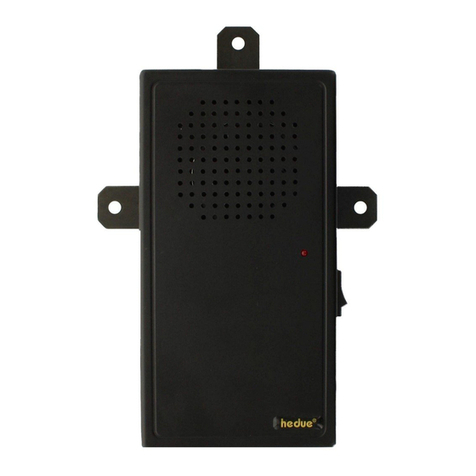
Hedue
Hedue M420 manual
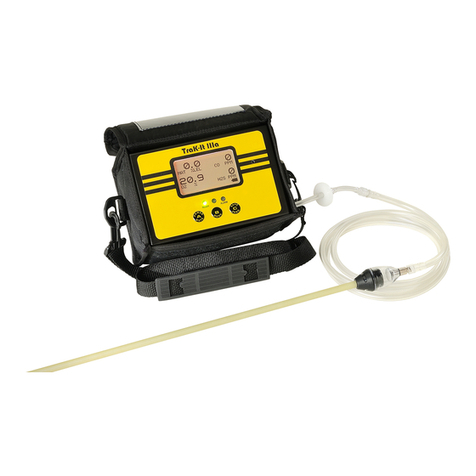
SENSIT Technologies
SENSIT Technologies Trak-It IIIa Quick start instructions
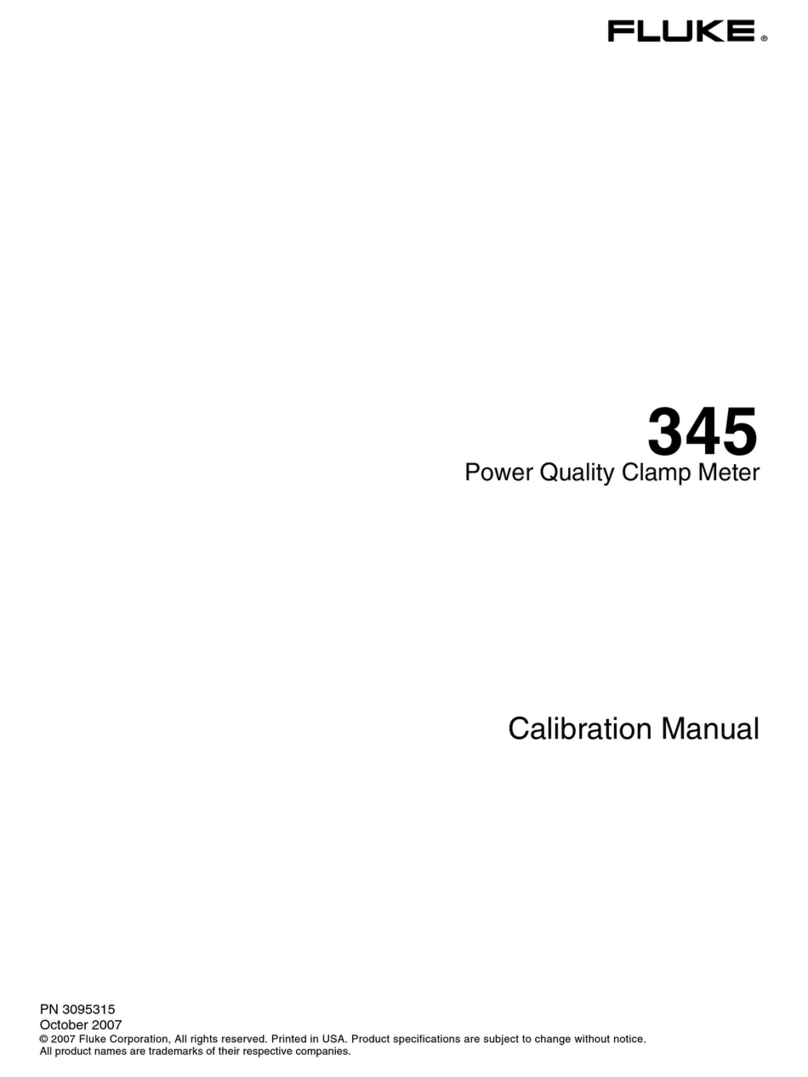
Fluke
Fluke 345 Calibration manual
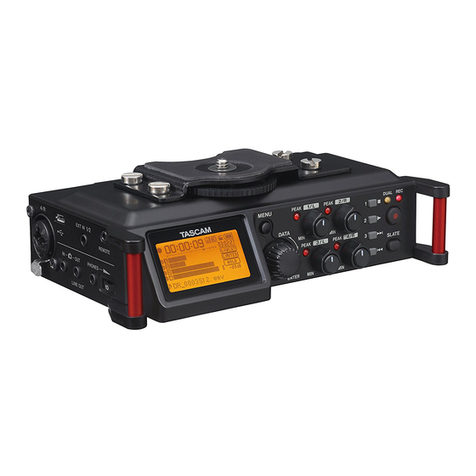
Tascam
Tascam DR-70D owner's manual
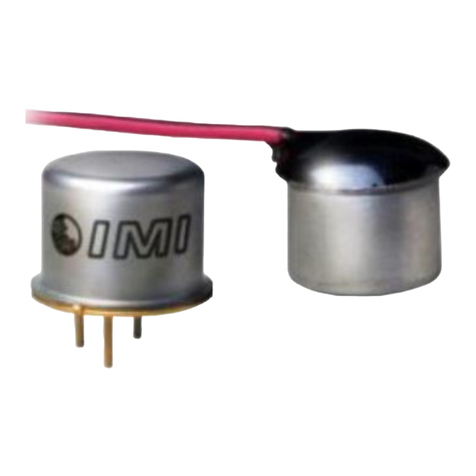
PCB Piezotronics
PCB Piezotronics IMI Sensors 66192CPZ1 Installation and operating manual
